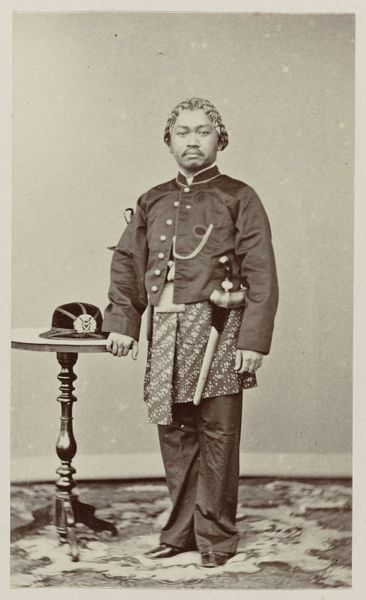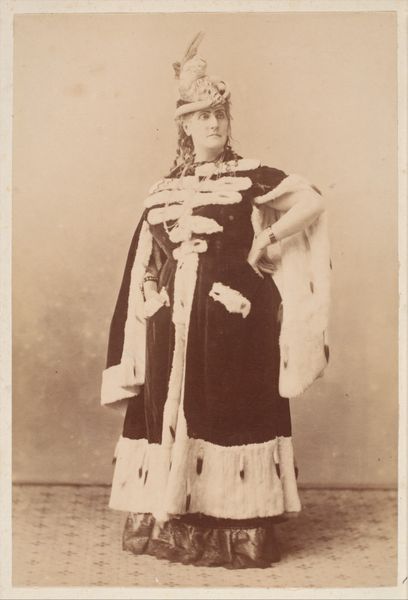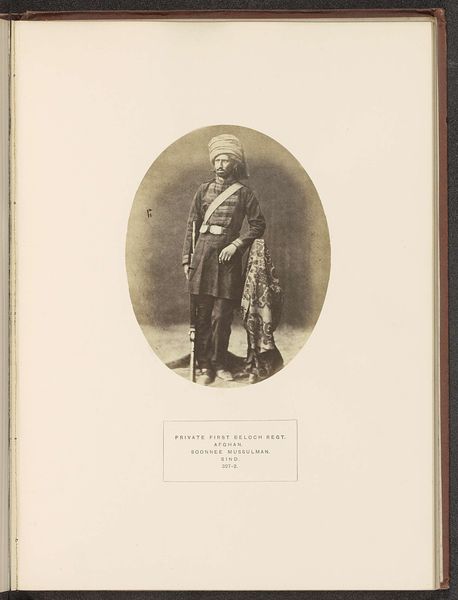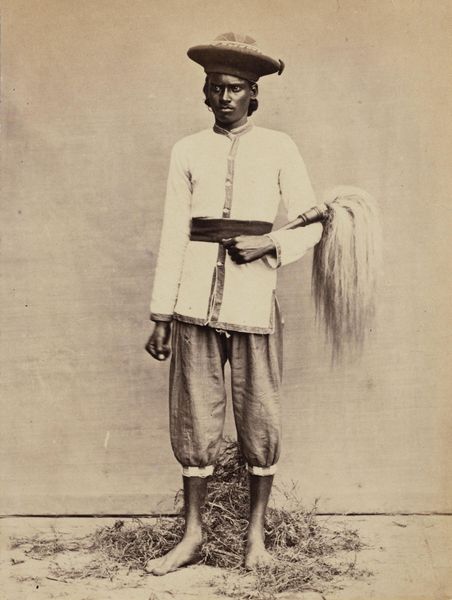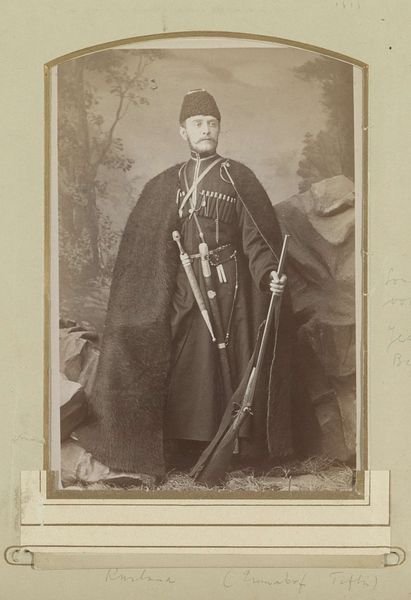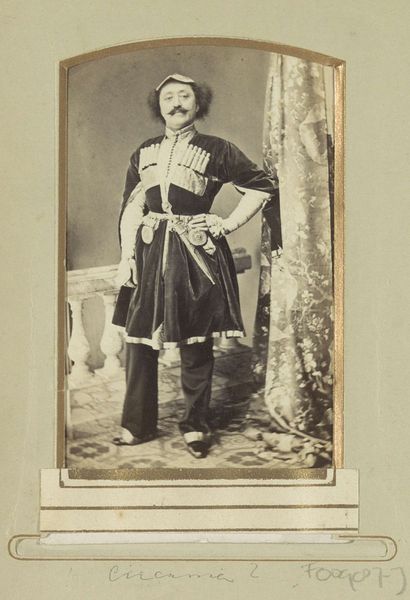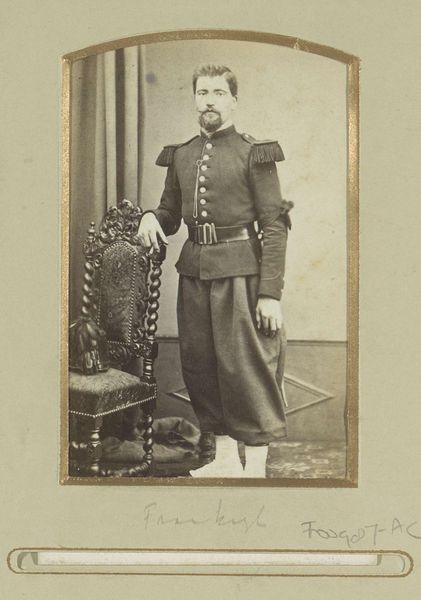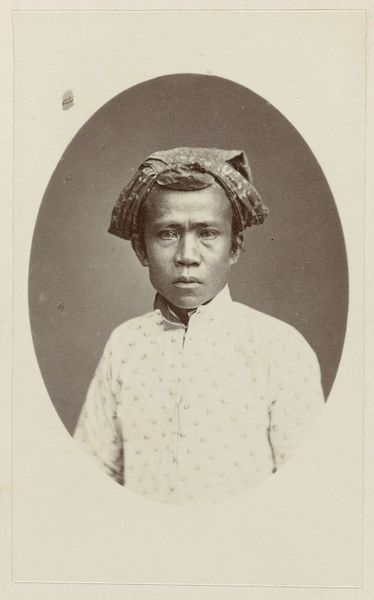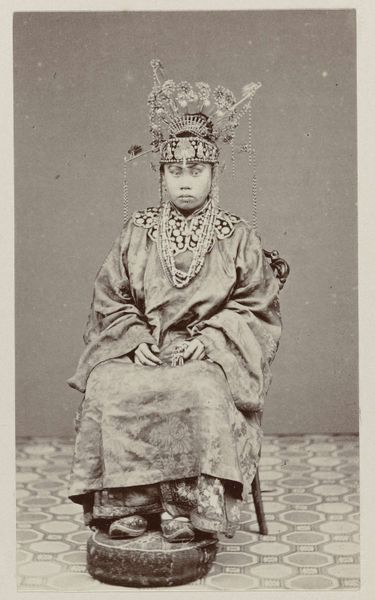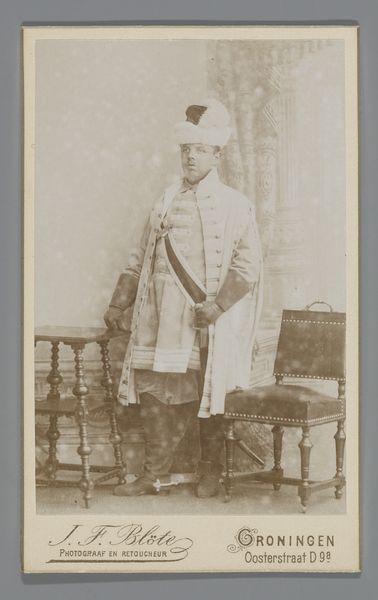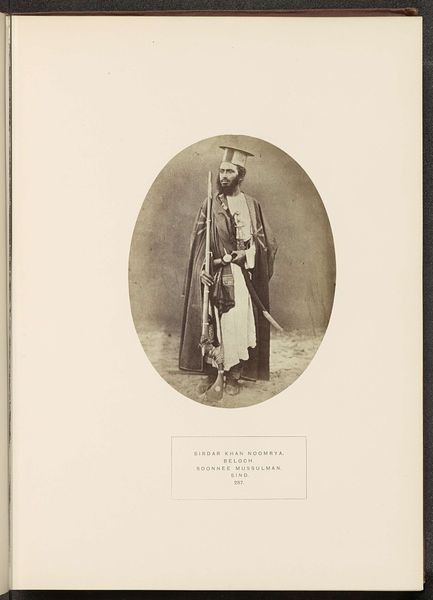
photography, albumen-print
#
portrait
#
asian-art
#
photography
#
historical photography
#
19th century
#
albumen-print
#
realism
Dimensions: height 92 mm, width 57 mm
Copyright: Rijks Museum: Open Domain
Curator: The detail is captivating. This is an albumen print titled "Jonge Javaanse vorst," or "Young Javanese Prince," created by Woodbury & Page sometime between 1865 and 1890. Notice how the ornate patterns of his jacket stand out. Editor: It exudes an air of imperial authority, yet it’s tempered by a palpable sense of constraint. The gaze is averted, almost mournful. This young royal seems caught between worlds. Curator: Indeed. The composition directs the eye immediately to the young man’s attire. Note how Woodbury & Page have used light and shadow to define the embroidery. This really highlights the materiality, bringing depth to a typically flat medium. Editor: And this sartorial splendor, indicative of power, also highlights the complicated legacy of Dutch colonialism during that period. We are observing a Javanese royal during an era profoundly shaped by Western dominance, which influenced everything, from the economics of resource extraction to visual representations of cultural power and identity. Curator: It’s the contrast between the detail in his garments and the relative simplicity of the backdrop that intrigues me most. That blank space almost isolates him, forcing us to concentrate on form and line. Editor: But consider that staged isolation! Photography during that time often functioned as a tool of imperial documentation. This is not merely a portrait, but also a record intended for external consumption. How was this image received back in the Netherlands, and what impact did it have on constructing perceptions of Javanese people? Curator: You introduce vital questions. However, the image's merit is based on technical ingenuity—the depth and clarity achieved via the albumen print. Look at the man’s face, which captures human presence and individual dignity via the subtle graduation of light. It's remarkable. Editor: And if we analyze the symbolic content, such as his kris, the feathers on his hat, each becomes a crucial marker of identity but, also potential symbols of subjugated status in the context of colonial rule. It challenges us to unpack these nuances and reflect upon the historical forces at play during this interaction between colonizer and colonized. Curator: Ultimately, this work stands out through its compelling use of form to capture a young ruler from a distant land, demonstrating photography's strength for detailed visual fidelity. Editor: It offers an immediate point of visual and historic entry to question power, representation, and the long-lasting influences of colonial era visual narratives.
Comments
No comments
Be the first to comment and join the conversation on the ultimate creative platform.
